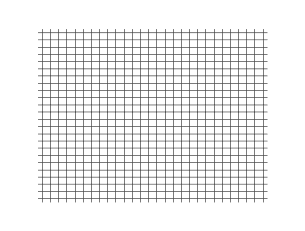 | ||
Longitudinal waves are waves in which the displacement of the medium is in the same direction as, or the opposite direction to, the direction of propagation of the wave. Mechanical longitudinal waves are also called compressional waves or compression waves, because they produce compression and rarefaction when traveling through a medium, and pressure waves, because they produce increases and decreases in pressure. The other main type of wave is the transverse/transversal wave, in which the displacements of the medium are at right angles to the direction of propagation. Some transverse waves are mechanical, meaning that the wave needs a medium to travel through. Transverse mechanical waves are also called "shear waves".
Contents
By acronym, "longitudinal waves" and "transverse waves" were occasionally abbreviated by some authors as "L-waves" and "T-waves" respectively for their own convenience. While these two acronyms have specific meanings in seismology (L-wave for Love wave or long wave) and electrocardiography (see T wave), some authors chose to use "l-waves" (lowercase 'L') and "t-waves" instead, although they are not commonly found in physics writings except for some popular science books.
Examples
Longitudinal waves include sound waves (vibrations in pressure, particle of displacement, and particle velocity propagated in an elastic medium) and seismic P-waves (created by earthquakes and explosions). In longitudinal waves, the displacement of the medium is parallel to the propagation of the wave. A wave along the length of a stretched Slinky toy, where the distance between coils increases and decreases, is a good visualization. Sound waves in air are longitudinal, pressure waves.
Sound waves
In the case of longitudinal harmonic sound waves, the frequency and wavelength can be described by the formula
where:
The quantity x/c is the time that the wave takes to travel the distance x.
The ordinary frequency (f) of the wave is given by
The wavelength can be calculated as the relation between a wave's speed and ordinary frequency.
For sound waves, the amplitude of the wave is the difference between the pressure of the undisturbed air and the maximum pressure caused by the wave.
Sound's propagation speed depends on the type, temperature, and composition of the medium through which it propagates.
Pressure waves
In an elastic medium with rigidity, a harmonic pressure wave oscillation has the form,
where:
The restoring force, which acts to return the medium to its original position, is provided by the medium's bulk modulus.
Electromagnetic
Maxwell's equations lead to the prediction of electromagnetic waves in a vacuum, which are transverse (in that the electric fields and magnetic fields vary perpendicularly to the direction of propagation). However, waves can exist in plasmas or confined spaces, called plasma waves, which can be longitudinal, transverse, or a mixture of both. Plasma waves can also occur in force-free magnetic fields.
In the early development of electromagnetism, there were some like Alexandru Proca (1897-1955) known for developing relativistic quantum field equations bearing his name (Proca's equations) for the massive, vector spin-1 mesons. In recent decades some extended electromagnetic theorists, such as Jean-Pierre Vigier and Bo Lehnert of the Swedish Royal Society, have used the Proca equation in an attempt to demonstrate photon mass as a longitudinal electromagnetic component of Maxwell's equations, suggesting that longitudinal electromagnetic waves could exist in a Dirac polarized vacuum.
After Heaviside's attempts to generalize Maxwell's equations, Heaviside came to the conclusion that electromagnetic waves were not to be found as longitudinal waves in "free space" or homogeneous media. But Maxwell's equations do lead to the appearance of longitudinal waves under some circumstances, for example, in plasma waves or guided waves. Basically distinct from the "free-space" waves, such as those studied by Hertz in his UHF experiments, are Zenneck waves. The longitudinal modes of a resonant cavity are the particular standing wave patterns formed by waves confined in a cavity. The longitudinal modes correspond to those wavelengths of the wave which are reinforced by constructive interference after many reflections from the cavity's reflecting surfaces. Recently, Haifeng Wang et al. proposed a method that can generate a longitudinal electromagnetic (light) wave in free space, and this wave can propagate without divergence for a few wavelengths.
